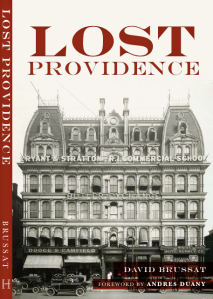
Block of townhouses along East 79th St., near New York’s Museum Mile. (Zack DeZon/NYT)
In late March, Michael Kimmelman, the architecture critic for the New York Times, strolled up Fifth Avenue with architectural historian Andrew Dolkart of Columbia University on a “virtual tour” of the Museum Mile. Readers of this blog are indebted to Kristen Richards of the ArchNewsNow website for reprinting Kimmelman’s wonderful article, his second in a new series on the streets of New York City in this viral period. His first was on Broadway.)
Conversing along the way, the two discuss not just the museums – mostly repurposed mansions – but the townhouses along the side streets off of Fifth. What they had to say, however, is not as fascinating as the accompanying photographs taken by Zack DeZon for the Times. Zowie! I even thought of entitling this post “Zack DeZon for president” but decided against it.
As for Kimmelman and Dolkart, their interest focused more on the lineage of the buildings’ ownership than on the design of their glorious façades. Feel free to ignore the chat and focus on the photos. Still, the text is not without its own revelatory titillations. For example, Dolkart really seems to love the architecture of the side streets, in this case 79th Street. He declares:
In House of Mirth, Edith Wharton’s heroine turns a corner and sees grand new houses, “fantastically varied, in obedience to the American craving for novelty.” Americans at the turn of the century felt they had inherited the whole of Western civilization, that it was theirs to do with as they wished. …
And why not? Dolkart seems slightly miffed at that. Nevertheless, he goes on to further describe the variety of the buildings along East 79th:
So you get the Acuavella Galleries at 18 East 79th, designed in 1908 by Ogden Codman Jr., a Francophile, next to a building that looks like it was shipped from Bedford Square in London, next to two buildings that could have arrived straight from Beacon Hill, Boston. Then the block ends at the corner of 79th and Fifth with a chateau from the Loire Valley. Crazy and wonderful.
[Kimmelman:] And it works together.
I think of this variety as Americanness. The corner chateau, for example, both fits in and stands out.
And of course all of this beauty is affirmed by DeZon’s photography. He may be almost as good as Sandor Bodo of the Providence Journal.
And yet neither Kimmelman nor Dolkart seem to have noticed the implications of their mutual pleasure in the creativity and innovation of classical architecture. These days classical creativity and innovation are in very bad odor, amounting to pure denial. This is because damning classicism as “unimaginative” is de rigueur under the rules of the lockstep modernist response to the proposed presidential executive order shifting federal architectural styles from modernism to classicism. I don’t know where Dolkart stands on the E.O., but Kimmelman himself recently opined that it amounts to a “war on architectural innovation.”
So, notwithstanding how happy we are to see this article, a slap to the wrist of Mr. Kimmelman is in order. And a gentler slap on the wrist for Mr. Dolkart as well, who has yet to get with the program. Where are Kimmelman’s editors at the Times? Asleep at the switch?
Just askin’.

Embellishments of the Ukrainian Institute, designed by C.P.H. Gilbert. (DeZon/NYT)



Pingback: They don’t “get” Carnegie Hall | Architecture Here and There
Thanks so much for the kind words, David! Made my morning.
LikeLike
The pleasure was mine, Zack, indeed twofold with the joy of seeing your photographs.
LikeLike
Pingback: Readings on the exec. order | Architecture Here and There
Were there council regulations that specified which architectural plans would be acceptable and which would not? For example were only townhouses allowed, so that free standing homes with space on both sides would be rejected? Did every townhouse have to have at least one balcony facing the main street?
LikeLike
My instincts tell me that there were fewer boards and regulations covering development in New York then than there are today, but surely there were some. They were, at some point, focused more on tenement districts than otherwise. The article makes some oblique references to planning matters, especially regarding Andrew Carnegie’s purchase of an entire block of Fifth between 90th and 91st. Maybe you can email Professor Dolkart, he probably knows the answers to your questions.
LikeLike
As in fine antiques, the “provenance” of buildings adds value, and when that’s of a distinguished recognizable percentage it takes on a new dimension and increases value greatly.
Sent from my iPhone
>
LikeLike
I suppose, Stan, that’s the case with all things whose design was intentionally linked to longstanding traditional concepts of beauty.
LikeLike